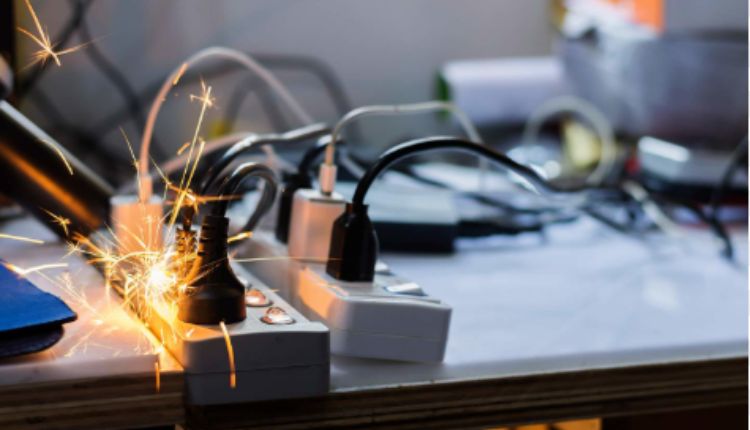
Electrical
Electrical issues in a commercial setting can disrupt daily operations, impact productivity, and even pose safety hazards. While some minor issues can be diagnosed and resolved in-house, others require the expertise of a professional. Understanding common electrical problems and knowing when to seek help is essential for maintaining a safe and efficient workspace. Businesses seeking reliable solutions can benefit from working with electrical contractors Jacksonville NC, like Nash Electric LLC, who specialize in diagnosing and resolving complex electrical issues.
Identifying Overloaded Circuits: Signs of Excessive Power Consumption
Overloaded circuits are one of the most common electrical problems in commercial settings. Excessive power consumption can trip breakers, cause overheating, and increase the risk of electrical fires. Recognizing the signs of an overloaded circuit can help prevent costly disruptions.
- Frequent Breaker Trips: If circuit breakers frequently trip, it may indicate that too many devices are drawing power from a single circuit. This can happen in offices with multiple computers, printers, and other high-power devices running simultaneously.
- Dimming or Flickering Lights: Lights that dim when other equipment is turned on suggest an overloaded circuit struggling to distribute power evenly. This is especially common in commercial kitchens, retail spaces, and offices with extensive lighting setups.
- Warm or Discolored Outlets: Outlets that feel warm to the touch or show signs of discoloration may indicate excessive heat buildup due to an overloaded circuit. This is a serious warning sign that should not be ignored.
- Buzzing Sounds from Electrical Panels: A buzzing noise coming from the breaker panel suggests that circuits are under excessive load, potentially leading to electrical failures.
Checking for Faulty Outlets and Switches: Diagnosing Power Loss Problems
Faulty outlets and switches can lead to power inconsistencies, equipment malfunctions, and even fire hazards. Regularly checking these components can help prevent larger electrical failures.
- Non-Functioning Outlets: If an outlet stops working, the first step is to check for a tripped breaker or a blown fuse. If the issue persists, the wiring behind the outlet may be damaged or disconnected.
- Loose or Wobbly Switches: Light switches that feel loose or do not always respond properly could indicate internal wear or faulty wiring. This can lead to intermittent power failures or even electrical arcing.
- Sparks or Burning Smells: If an outlet produces sparks when plugging in a device, or if there’s a burning smell near a switch, it indicates potential overheating or short-circuiting. This is a serious fire hazard that requires immediate attention.
- GFCI Outlet Failures: Ground Fault Circuit Interrupter (GFCI) outlets are designed to shut off power when detecting an imbalance. If a GFCI outlet repeatedly trips, it may indicate moisture exposure or a faulty component.
Testing Voltage Irregularities: How to Detect Fluctuations That Damage Equipment
Voltage fluctuations can damage sensitive electronic equipment, cause data loss, and reduce the efficiency of electrical systems. Testing for irregular voltage levels can help identify potential problems before they escalate.
- Equipment Malfunctions: Sudden shutdowns or erratic behavior in computers, printers, and industrial machinery can indicate voltage fluctuations affecting performance.
- Dimming or Flickering Lights: Unstable voltage levels can cause lights to dim or flicker, especially when large electrical loads are switched on.
- Overheating Transformers or Power Supplies: If transformers or power adapters become excessively hot, it may be due to inconsistent voltage levels.
- Testing with a Multimeter: Using a voltage tester or multimeter can help measure electrical output. Readings that fluctuate significantly from the standard 120V or 240V range indicate an underlying issue.
Assessing the Health of Your Breaker Panel: When It’s Time for an Upgrade
The breaker panel serves as the control center for a building’s electrical system. An outdated or overloaded panel can lead to power failures and safety hazards. Knowing when to upgrade is crucial for maintaining a reliable electrical system.
- Frequent Circuit Breaker Trips: If breakers trip often, it may indicate that the panel is struggling to handle the building’s electrical load.
- Outdated or Undersized Panels: Older commercial buildings may have outdated panels that do not meet current power demands. If a panel is rated below 200 amps, it may be insufficient for modern electrical needs.
- Burn Marks or Corrosion: Visible damage on a breaker panel, such as burn marks or rust, indicates potential overheating or water exposure, both of which can lead to failure.
- Expansion of Business Operations: If a business is adding new equipment, expanding workspace, or increasing power usage, upgrading the breaker panel ensures electrical safety and reliability.
Knowing When to Call a Professional: Recognizing Problems That Need Expert Help
While basic troubleshooting can resolve minor electrical issues, some problems require the expertise of a professional electrician. Knowing when to call for help can prevent dangerous situations and costly repairs.
- Burning Smell or Smoke: If there is a burning odor coming from outlets, switches, or the breaker panel, it indicates a serious electrical hazard that needs immediate attention.
- Repeated Power Failures: If electrical problems persist despite troubleshooting efforts, there may be underlying wiring or panel issues that require expert diagnosis.
- Unexplained High Energy Bills: A sudden spike in energy costs may indicate inefficient electrical systems, power leakage, or outdated equipment drawing excess electricity.
- Building Code Compliance: Commercial buildings must meet strict electrical codes and regulations. If an electrical system is outdated or improperly installed, hiring a professional ensures compliance and safety.
Conclusion
Troubleshooting electrical issues in a commercial setting requires a systematic approach to identify and address problems before they escalate. From overloaded circuits to faulty outlets and voltage fluctuations, recognizing warning signs can help prevent costly disruptions. Regular maintenance, proper load distribution, and upgrading outdated electrical systems contribute to a safer and more efficient workspace. When electrical problems persist, businesses should seek commercial electrical service professionals to diagnose and resolve complex issues effectively, ensuring a stable and secure power supply for their operations.





